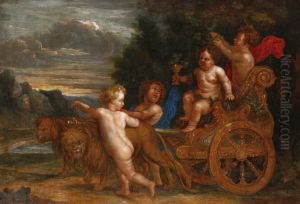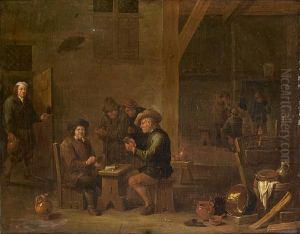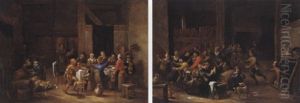Hendrick Herregouts Paintings
Hendrick Herregouts was a Flemish Baroque painter born in Mechelen, Southern Netherlands (now Belgium) in 1633. He was the son of the painter Daniel Herregouts and Catharina van der Hoeven. Hendrick's artistic journey was deeply influenced by his father, who was a painter of history scenes and portraits, which were popular genres during the Baroque period.
Hendrick initially trained under his father before moving to Italy to further his studies and experience the Italian art scene firsthand. Italy, particularly Rome, was a central hub for artists during the 17th century, and many Northern European painters, including Hendrick, went there to study the works of Italian masters. Herregouts spent a considerable amount of time in Rome, which had a profound impact on his artistic development. His style was influenced by the dramatic chiaroscuro of Caravaggio and the dynamism found in the works of Peter Paul Rubens.
After spending several years in Italy, Hendrick returned to Flanders where he became a master in the Antwerp Guild of St. Luke in 1656. Throughout his career, Herregouts worked in various cities in the Southern Netherlands, including Antwerp, Brussels, and Bruges. In Bruges, he became a highly respected figure and was appointed as court painter to the governor of the Spanish Netherlands.
Herregouts' oeuvre mainly consists of religious and mythological scenes, often characterized by dramatic lighting, intense emotion, and dynamic compositions. His work reflects the Counter-Reformation's emphasis on the didactic and emotional power of religious art. Although not as widely known as some of his contemporaries, Herregouts was a talented painter whose work contributed to the richness of the Baroque tradition in Flanders.
Hendrick Herregouts died in Bruges in 1704. His works, though not as prevalent in modern collections as those of some other Baroque artists, can still be found in museums and private collections, where they continue to be studied for their contribution to the Flemish painting tradition.


